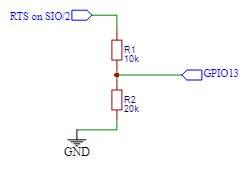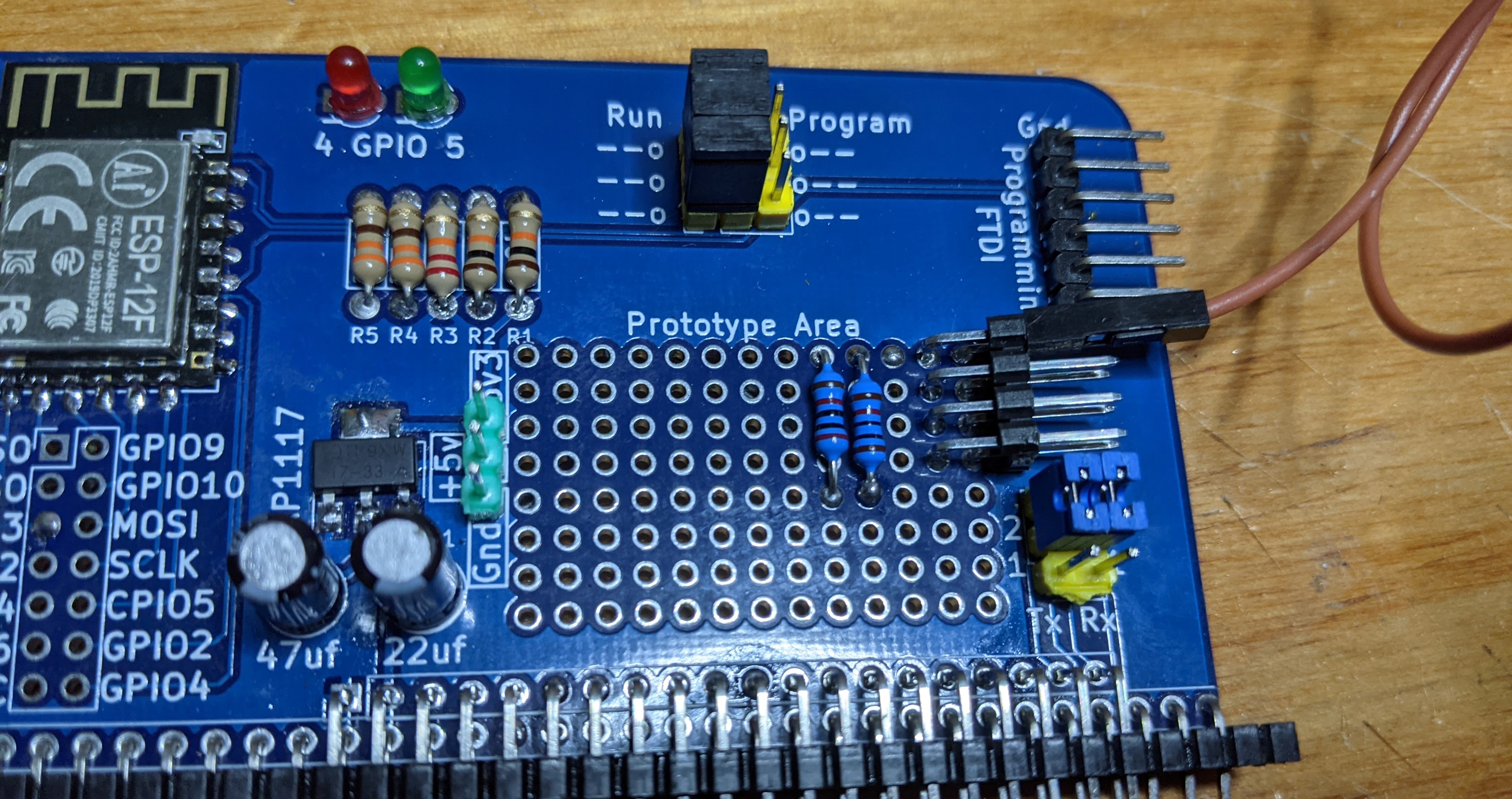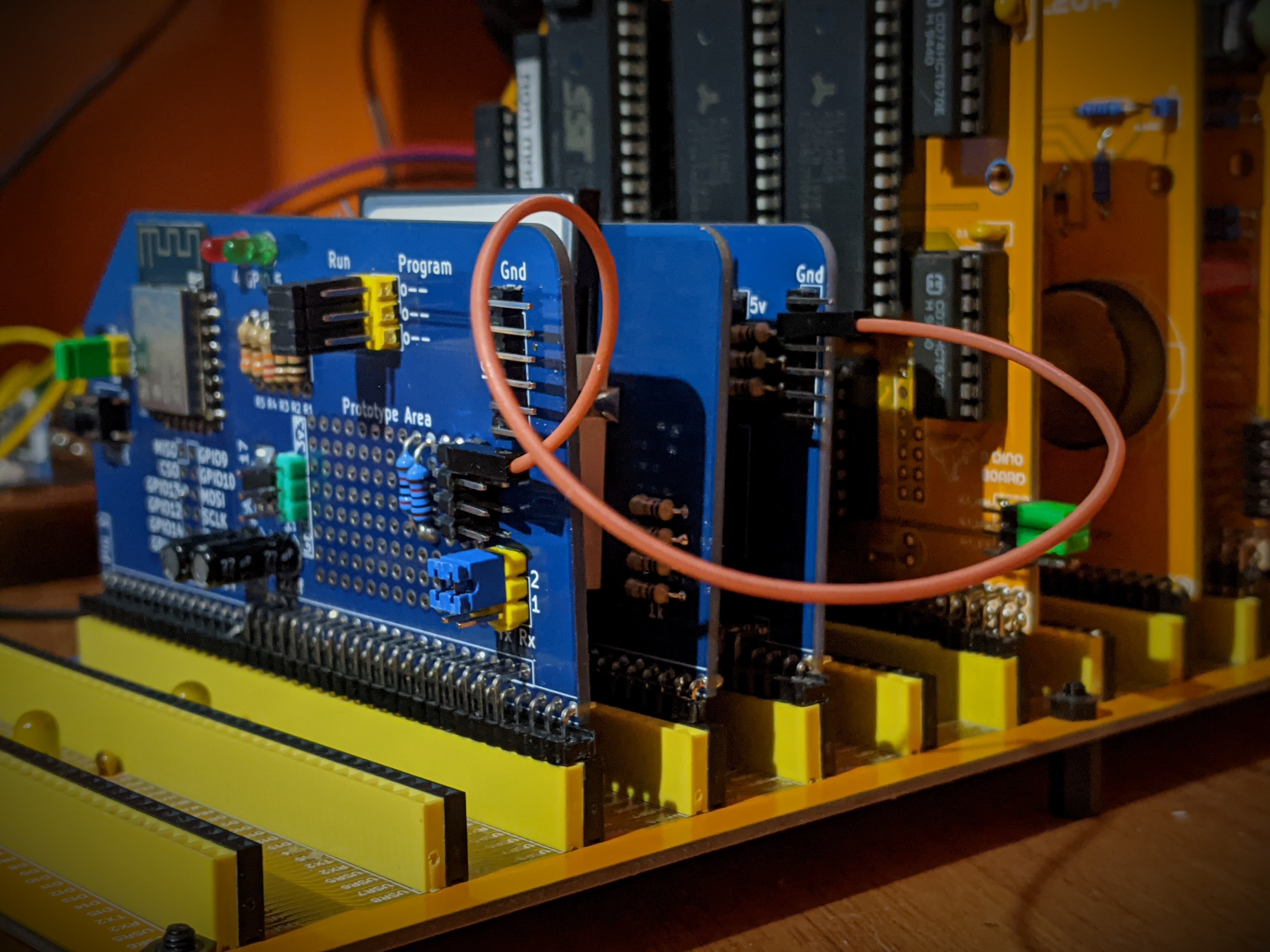Over the last couple of weekends I have manage to get the RC2014 ESP8266 WIFI Module working in MSX-DOS.
I now have a 'WIFI' modem integrated into the serial communication. Finally, my RC2014 no longer needs to be 'connected' to my main PC - it can reach out through the Internet all on its own.
I have been writing my own custom firmware for ESP8266 to give the MSX/RC2014 kit all it needs.
At the moment, I can:
- Use my terminal emulator application (formally called telnet) term.com to send commands to the ESP8266 module - initiate telnet connection and then access any online BBS.
- xrecv.com can now, with an optional command, receive a file from my main PC wirelessly (using xmodem over TCP/IP)
I needed to modify the WIFI Module to allow hardware flow control - otherwise the ESP8266 will overwhelm the RC2014's receive buffer. This required adding a couple of resistors to map the 5V RTS from the SIO/2 to the 3.3V CTS/GPIO13 line. Flow control is only needed in the one direction - from ESP8266 to SIO/2. When transmitting from the SIO/2 to the ESP8266, the ESP8266 will easily keep up at the 19200 baud rate.

The RC2014 WIFI module provides a great prototyping area to make this modification so easy:



I have never used an ESP8266 before, so had to learn a few things - I used the Arduino Core library - making it very easy for me to code for the chip.
But I did struggle with a few things:
- The RX line needs to be open drain - if the internal pull up resistor is active, then the on-board voltage divider of the WIFI module will not work. The Arduino Core, by default, enables the internal pull up - and there seems to be no interface to change this.
- Arduino Core also does not have any functions to flip the ESP8266 into using hardware flow control for the serial lines.
I solves these problems by directly manipulating the relevant ESP8266 registers.
To disable the internal pull up resister of the RX line:
void setRXOpenDrain() {
GPC(RX_PIN) = (GPC(RX_PIN) & (0xF << GPCI)); // SOURCE(GPIO) | DRIVER(NORMAL) | INT_TYPE(UNCHANGED) | WAKEUP_ENABLE(DISABLED)
GPEC = (1 << RX_PIN); // Disable
GPF(RX_PIN) = GPFFS(GPFFS_BUS(RX_PIN)); // Set mode to BUS (RX0, TX0, TX1, SPI, HSPI or CLK depending in the pin)
}
And for flipping hardware flow control on and off:
void setCTSFlowControlOn() {
pinMode(CTSPin, FUNCTION_4); // make pin U0CTS
U0C0 |= (1 << UCTXHFE); // Set bit to activate Hardware flow control
}
void setCTSFlowControlOff() {
pinMode(CTSPin, FUNCTION_4); // make pin U0CTS
U0C0 &= ~(1 << UCTXHFE); // Reset bit to deactivate hardware flow control
}
The full code for the ESP8266 can be found at: https://github.com/vipoo/yellow-msx-esp8266-wifi-module
And an xmodem serial and TCP/IP client I wrote in nodejs can be found at: https://github.com/vipoo/xmodem-cli
And the main project is still at: https://github.com/vipoo/yellow-msx-series-for-rc2014
 Dean Netherton
Dean Netherton
Discussions
Become a Hackaday.io Member
Create an account to leave a comment. Already have an account? Log In.